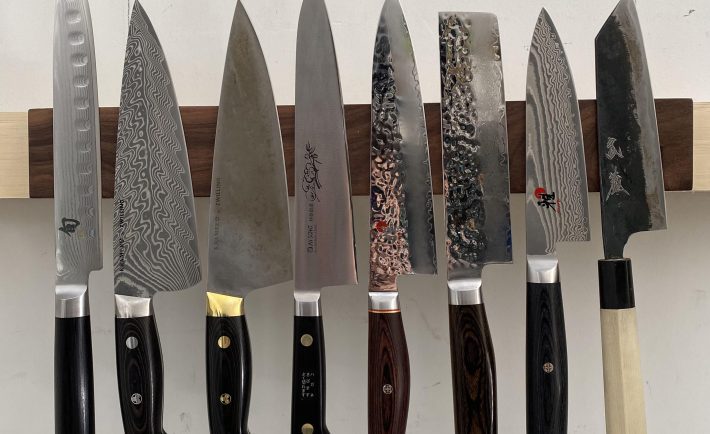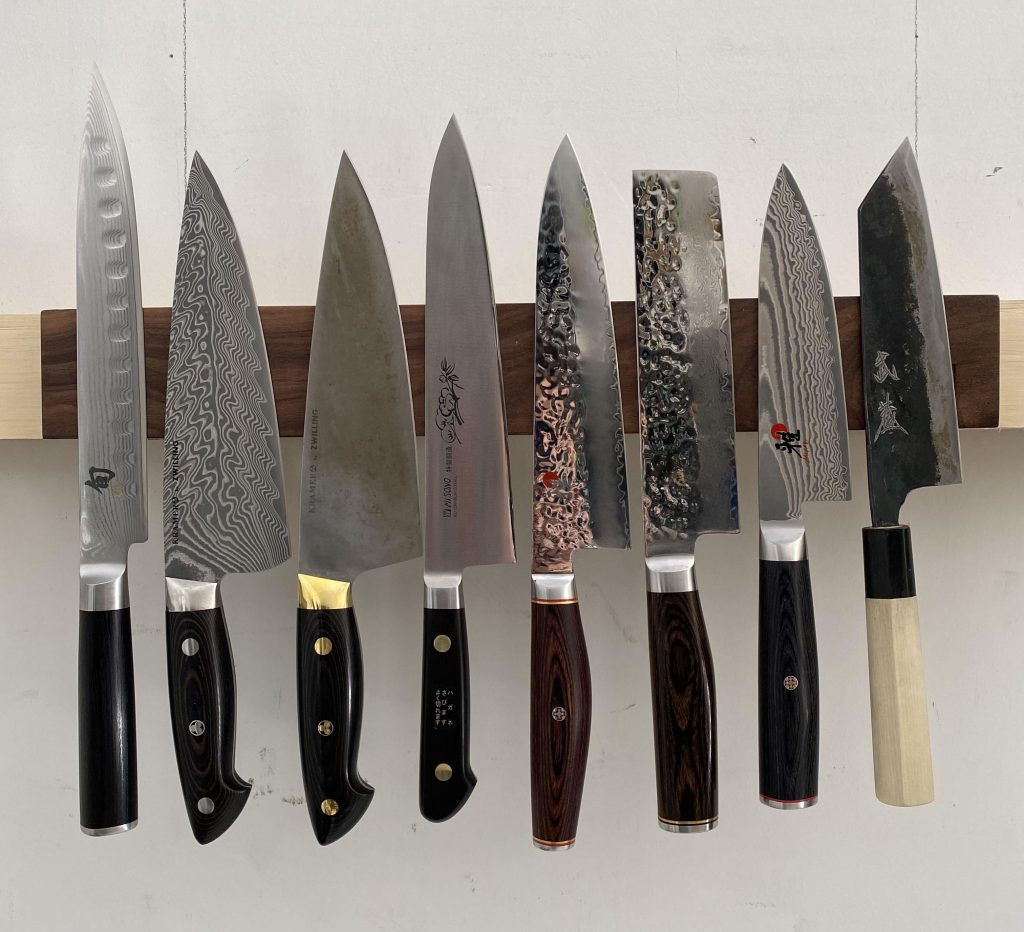
Damascus knives have been renowned over thousands of years for their distinctive patterns and exceptional durability, earning them a revered status among knife enthusiasts, chefs, and knife collectors across the globe. With their roots tracing back to ancient times, they offer a blend of art and function that extends far beyond the typical understanding of a knife for the uninitiated. This introduction will provide an overview of the fascinating history and unique features of these blades, setting the groundwork for the exploration of the enchanting world of Damascus knife collecting.
An Overview of Damascus Knives

In order to truly appreciate their intrinsic value, it’s important to first understand what a Damascus knife is. At their core, Damascus knives are multi-layered steel blades that have undergone a forging process, involving folding and welding numerous layers of steel together. This process, rooted in ancient blacksmith techniques, results in a remarkably sturdy blade peppered with beautiful wave-like patterns, creating a sought-after mixture of aesthetic appeal and high functionality. These knives’ namesake, Damascus, hails from the Syrian city where it is believed this masterful metalwork first originated.
Understanding how Damascus knives are made can also deepen your appreciation. The creation process is a form in itself, requiring significant skill, precision, and patience from the artisan. Damascus knives are born when various types of steel are forged together, and then folded repeatedly to create layers. When these layers are revealed during the knife-making process, mesmerizing patterns emerge, reminiscent of flowing water or shifting sands. Truly, Damascus knives are not just kitchen tools or collector’s pieces, but remarkable feats of craftsmanship that bear testament to their creators’ expertise and finesse.
Why Collect Damascus Knives?

The act of collecting, be it rare books, fine wine, or Damascus knives, often goes beyond the mere acquisition of things. Collecting Damascus knives, in particular, can be seen as a celebration of unparalleled craftsmanship and historical relevance. Each Damascus knife carries with it a rich history, an artist’s dedication, and a unique beautiful design. In a consumerist culture that often prioritizes quantity over quality, Damascus knives stand out as items that hold enduring value. Many collectors appreciate these layered steel blades for their blend of artistry, historical significance, and functional utility.
Collecting Damascus knives can also serve as a form of investment. High-quality Damascus knives retain, and in some cases, increase in value over time. Like other collectibles, their value hinges not just on their age but also on factors such as their condition, rarity, and the reputation of the craftsman. Given the skills and time required in their creation, every Damascus knife is unique, rendering some as sought-after items by other collectors, thereby potentially increasing their worth. Each knife added to your collection can be viewed as an investment piece that complements your collection while also holding potential for financial gain.
Starting your Collection
Starting a Damascus knife collection is an exciting endeavor that requires careful planning and educated decisions. The first step is to identify your budget. While one might assume that these centuries-old masterpieces would be unattainable, there are in fact a wide range of Damascus knives available at varying price points. Next, you need to decide on the style that you are drawn to since the design and pattern of each Damascus knife is unique. Whether you prefer a classic style or more contemporary design, finding a pattern that resonates with your aesthetic will add satisfaction to your collecting experience.
It is important to ensure the authenticity of the Damascus knives you purchase. As with most collectibles, there are counterfeit products in the market. Reliable sources for purchasing these knives include reputable online stores, experienced collectors, or directly from the craftsmen. Before making a purchase, it is advised to do your homework. Learn to identify the key markers of a genuine Damascus knife, such as the distinct wave-like pattern on the blade and quality craftsmanship. Also, consider investing in a good maintenance kit to ensure the knives remain in top condition, as proper care and maintenance will contribute to their longevity and value.
Expanding your Collection
Once you’ve started on your collecting path, expanding your Damascus knife collection should be a mixture of strategic planning and personal enjoyment. Building a diverse collection can help showcase the depth and range of Damascus knife styles and craftsmanship. It’s important to space out your purchases and give thought to what each new piece will add to your collection. Remember, the pursuit of a well-rounded collection is a marathon, not a sprint.
Networking with other collectors is another effective way to broaden your collection. Becoming a member of collectors’ communities can open up vast opportunities for you, not only professionally but also personally. By attending exhibitions and auctions, you can have the chance to score unusual pieces, engage with knowledgeable enthusiasts, and even learn trade secrets. Additionally, you might explore customizing your own Damascus knife for a unique addition to your collection. Regardless of your strategy, the expansion should be guided by your personal tastes and passion for these incredible knives.
Whether you’re a seasoned collector or a beginner stepping into the captivating world of Damascus knives, the rewards are plentiful. Take the time to appreciate each piece you acquire, as each one holds a tale of craftsmanship that extends back centuries. Immerse yourself in the community, and relish in the pleasure that comes from owning a collection of these remarkable knives. The world of Damascus knife collecting is waiting for you.




